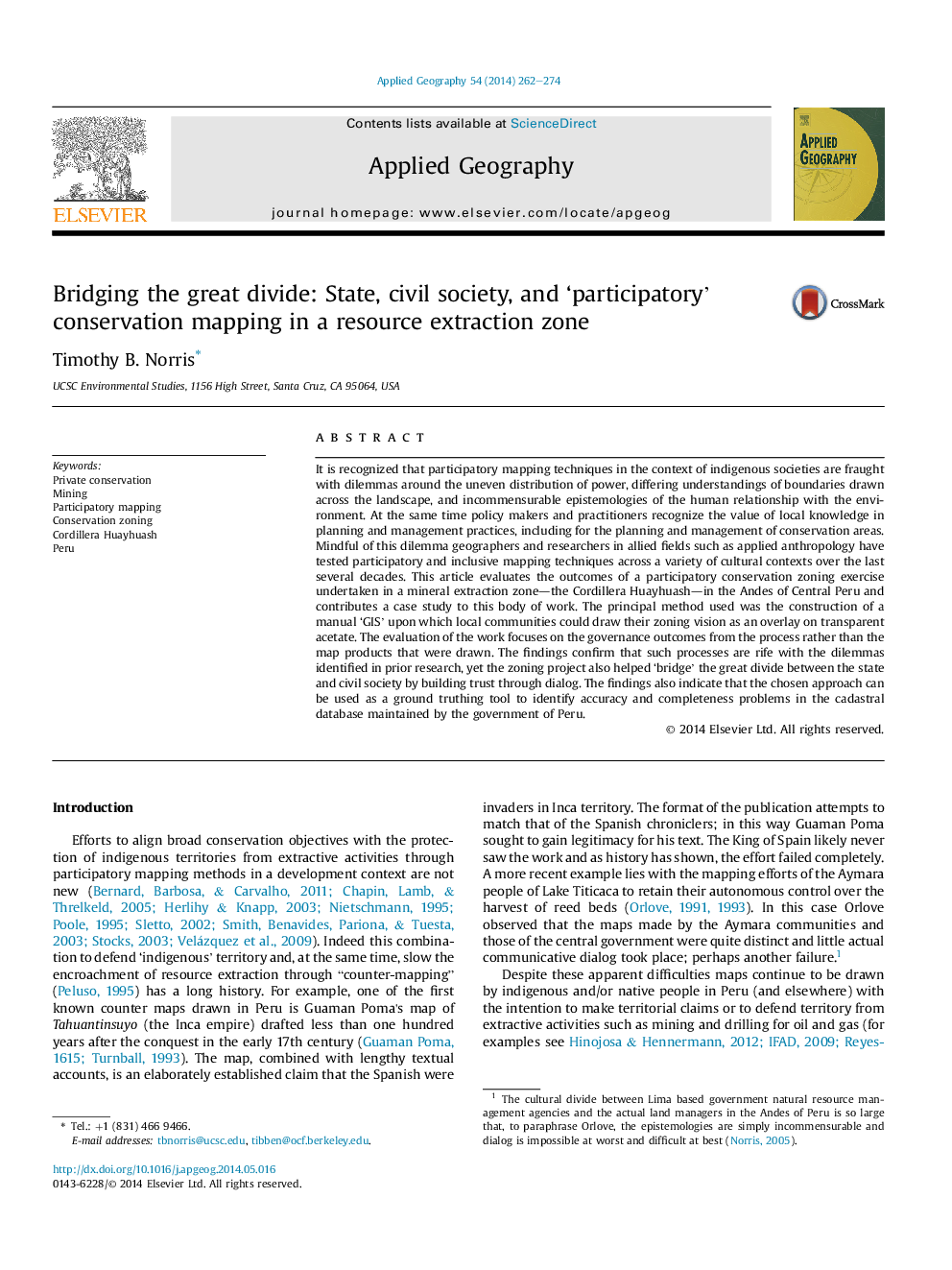| کد مقاله | کد نشریه | سال انتشار | مقاله انگلیسی | نسخه تمام متن |
|---|---|---|---|---|
| 83275 | 158712 | 2014 | 13 صفحه PDF | دانلود رایگان |
• The effectiveness of participatory conservation mapping in a mineral extraction zone is evaluated.
• During the zoning process errors in the national cadaster were identified.
• The results are now being used in a process to register land titles.
• The process built trust and helped ‘bridge’ relations between communities and government.
It is recognized that participatory mapping techniques in the context of indigenous societies are fraught with dilemmas around the uneven distribution of power, differing understandings of boundaries drawn across the landscape, and incommensurable epistemologies of the human relationship with the environment. At the same time policy makers and practitioners recognize the value of local knowledge in planning and management practices, including for the planning and management of conservation areas. Mindful of this dilemma geographers and researchers in allied fields such as applied anthropology have tested participatory and inclusive mapping techniques across a variety of cultural contexts over the last several decades. This article evaluates the outcomes of a participatory conservation zoning exercise undertaken in a mineral extraction zone—the Cordillera Huayhuash—in the Andes of Central Peru and contributes a case study to this body of work. The principal method used was the construction of a manual ‘GIS’ upon which local communities could draw their zoning vision as an overlay on transparent acetate. The evaluation of the work focuses on the governance outcomes from the process rather than the map products that were drawn. The findings confirm that such processes are rife with the dilemmas identified in prior research, yet the zoning project also helped ‘bridge’ the great divide between the state and civil society by building trust through dialog. The findings also indicate that the chosen approach can be used as a ground truthing tool to identify accuracy and completeness problems in the cadastral database maintained by the government of Peru.
Journal: Applied Geography - Volume 54, October 2014, Pages 262–274
